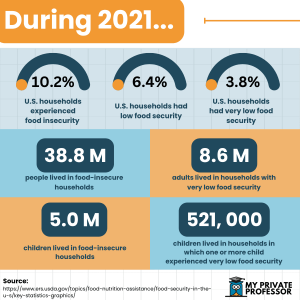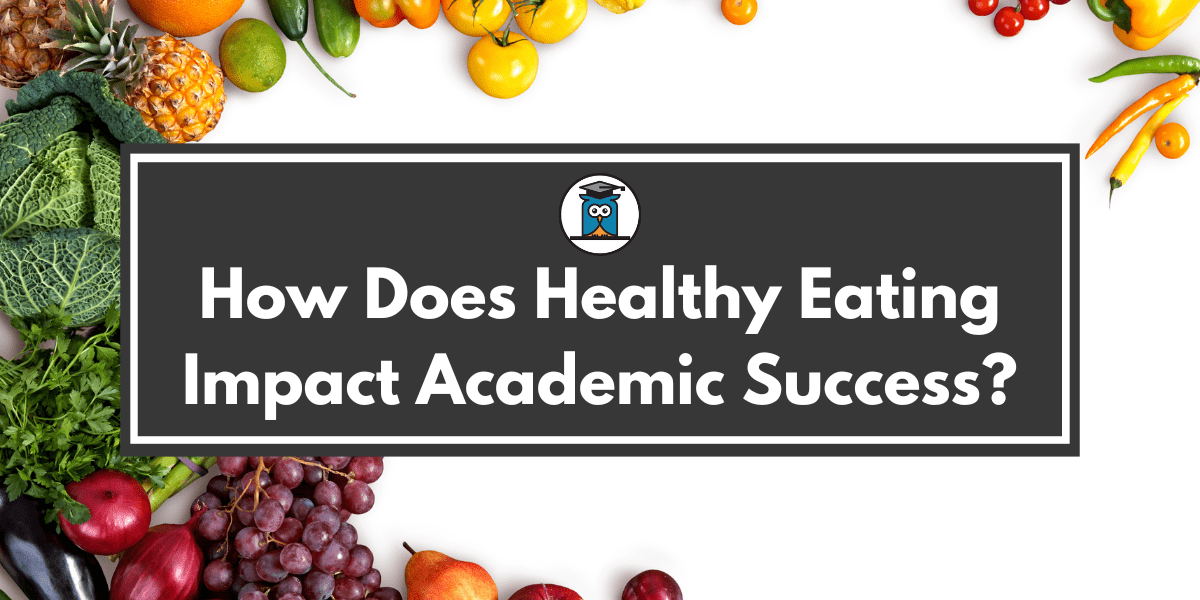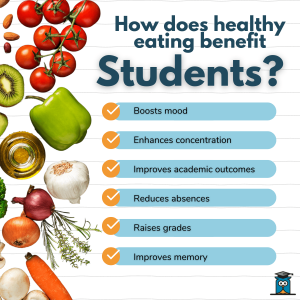Although first and foremost, we think of schools as institutions that mold students academically, schools also can and should empower students to develop healthy eating habits. In doing so, schools can help students to reach their potential both academically and beyond.
Doing well in school is not solely related to study habits and innate intellect. Rather, a ton of factors help determine a student’s academic success.
In reality, healthy eating plays a much larger role than you may realize.
How does diet impact a student’s learning experience?
As noted, academic outcomes are based on a variety of factors. And healthy eating is a big one.
Cognitive function
When you nourish your body with key nutrients, you’re simultaneously nourishing your brain. On the flip-side, if you’re neglecting certain minerals and vitamins, you risk experiencing a decline in focus.
A nutritional diet increases the production of new neurons, a process called neurogenesis. This process plays a key role in maintaining your central nervous system, neural plasticity, and brain homeostasis.
In simpler terms: Neurogenesis helps maintain cognitive function and repair damaged brain cells.
In addition, diet affects the brain’s synaptic plasticity. Synaptic plasticity is the number of connections between neurons. And the more connections, the better; with more neural connections in your brain, you’re more capable of learning, thinking and memorizing.
Furthermore, it’s important to recognize the specific vitamins and minerals which are linked to cognitive function.
For instance, research has found that iron deficiencies can decrease dopamine—which, in turn, impairs cognitive function. In addition, deficiencies in vitamins and minerals such as thiamine, vitamin E, vitamin B, iodine, and zinc can inhibit concentration.
While not getting enough of the right stuff has negative effects, getting too much of certain foods can also impact cognitive function.
For example, research has found that diets high in saturated fats can impair learning and memory. This is due to the effect of glucose. While glucose is necessary for increasing energy, foods too high in glucose lead to dropping energy levels.
Finally, research has demonstrated that skipping breakfast is associated with decreased alertness, attention, and memory—all of which are related to cognitive function.
Attendance
When students miss out on important vitamins and minerals, they may face various issues, such as:
- Increased stress
- Chronic diseases
- Reduced immunity
These issues inevitably make it more difficult to attend school. So it makes sense that an inadequate diet is linked to worse attendance for students.
Indeed, a study on the effect of a universal-free school breakfast program found that students who were at “nutritional-risk” had significantly worse attendance than those who were not at nutritional risk.
Behavior
In the study mentioned above, the researchers also found that the nutritionally at-risk students had significantly more behavioral problems than those not at-risk.
Research has demonstrated that students who don’t eat breakfast are more at risk for adverse behavior than students who do eat breakfast. In the classroom, this might include:
- Failing to pay attention
- Not completing assignments
- Not focusing
- Talking back to the teacher
- Bullying
- Refusing to follow instructions
Academic performance
Getting insufficient nutrients can lead to decreased mood, heightened stress, and other challenges. These consequences can heighten impaired cognition—and the result is declining academic success.
A 2020 study on the relationship between eating habits and academic performance found that, in regards to GPA, eating a healthy breakfast had a positive effect, while consuming fast food had a negative effect.
Furthermore, the CDC has found that:
Compared to students with low grades, students with high grades are more likely to:
- Eat breakfast every day
- Eat fruit or drink 100% fruit juice one or more times daily
- Eat vegetables one or more times daily
- Not drink soda
What are the key vitamins and minerals in a healthy diet?
Since the internet offers what seems like limitless information on health and nutrition, it can be difficult to identify what is actually accurate.
In order to perform at their potential and succeed in school, students should be regularly consuming certain vitamins and minerals, all of which can be found in foods.
Note: even though the benefits of some of these vitamins and minerals may not seem directly related to academics, they are all at least indirectly related.The body is holistic—meaning that when improving one area usually means simultaneously improving another area.
Access to healthy foods affects student success
Unfortunately, not all students have equal access to nutritional foods. 
According to a Harvard study, healthy diets cost around $1.50 more per person daily than less healthy diets. And since the mid 2000s, this discrepancy around healthy eating has been on the rise.
On top of this, low-income families are more likely to live in “food deserts” (areas with limited access to supermarkets or sources of healthy food) than high-income families.
When families face food insecurity, they’re likely to rely on less nutritional foods, which are the accessible option. And the consequence is that families in lower income groups are more likely to face obesity risks.
According to the CDC, from 2011-2014, the obesity prevalence for children and adolescents ages 2-19 was 18.9% for those in the lowest income group, and 10.9% for those in the highest income group.
Foods containing saturated fats are often the most accessible for low-income families. And this goes for schools, too. For schools in low-income areas, which already may be facing staff shortages and budget issues, these foods may seem like the only option.
The result is that students are consuming foods that don’t provide sufficient nutritional value—and are then going to class without optimal brain power.
How can schools do better to promote healthy eating among students?
Discuss the importance of breakfast
Skipping breakfast, as noted, is linked to decreased cognitive function. So it’s important to teach students about why this meal is important and how it can improve their work in school.
Ensure students have enough time to eat
If students are rushing, they’re much more likely to grab a chocolate bar over making a nutritious meal. So providing students with enough time to eat lunch is imperative.
According to The CDC, students should have at least 20 minutes to eat once they are seated.
Design lunchrooms strategically
Although it’s unfortunate that not all schools have equal access to nutritious foods, all schools can be more strategic in designing their lunchrooms.
That is, schools can use the tactic of placing the healthy options in the center of the lunchroom rather than on the side. By placing the healthier option more in students’ focal viewpoint, schools increase the possibility of students choosing those foods.
Provide health education programs
This one is a no-brainer. When students have time allotted for learning about health and nutrition, they will be more inclined to eat healthy foods.
Meanwhile, if they never get context/information about the importance of healthy eating, they will be less likely to invest in their nutrition.
Educate families about school meal programs
Often, it seems that families aren’t aware of certain meal programs for which their children may be eligible. Free and/or discounted meal prices can be a game changer for low-income families, so it’s important that schools communicate with families about their potential involvement.
Utilize school gardens
Developing gardens at school is a great way to teach students about nutrition through a hands-on approach. When you provide students with the chance to plant seeds and watch their fruits/vegetables grow, you allow them to feel a more personal connection with fruits and
vegetables.
Model healthy eating
One of the most powerful ways teachers and educators can encourage healthy eating among students is by being role models. Often, modeling good behavior is more effective than simply discussing it.
Teachers should consider regularly bringing in healthy snacks and lunches that include foods with key vitamins and nutrients.
Final thoughts
Abraham Maslow’s hierarchy of needs illustrates human needs from basic to complex levels. From greatest to least importance, the needs are: physiological needs, safety needs, belongingness and love needs, esteem needs, and self-actualization.
As such, academic achievement, which falls under self-actualization, cannot occur in the absence of adequate nutrition, which falls under physiological needs.
The brain requires significant amounts of energy to function optimally—energy which we get from food containing key nutrients. And if we don’t get enough, we risk becoming burnt out.
The bottom line is that all students have the potential to excel academically. But unfortunately, not all students have the same level of access to this critical resource: nutrition. Regardless of a student’s skills and intelligence, in the absence of essential nutrients, students cannot reach their full potential.
Often, modifying an environment is the most effective way to change someone’s behaviors. And as this may not be possible for students to do at home (based on financial or access issues), it’s imperative that educators help students through providing necessary information and modifying the school environment as much as possible to encourage healthy eating.









